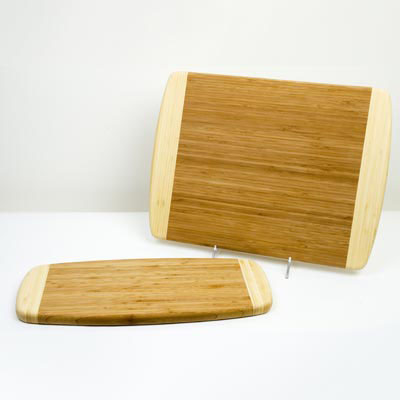In my kitchen, I prefer a solid, hardwood type of cutting board. This board would be used for preparation of meat or poultry while a separate cutting board — usually glass — would be used for cutting of veggies and fruit. The use of two cutting boards will significantly reduce the chances of cross contamination.
 However, whenever I use a wooden or plastic cutting board, I pay close attention to the number of grooves I’ve placed in the board from years of chopping and cutting with my heavy hand. It is difficult to effectively clean and sanitize such a board and bacteria could be left behind that tend to hide in these cuts.
However, whenever I use a wooden or plastic cutting board, I pay close attention to the number of grooves I’ve placed in the board from years of chopping and cutting with my heavy hand. It is difficult to effectively clean and sanitize such a board and bacteria could be left behind that tend to hide in these cuts.
I analyzed a number of cutting boards (wooden and plastic) during the TV show, Kitchen Crimes, and often found high bacterial counts, including fecal coliform bacteria (1000cfu/gm). Once a board has a number of good slashes, maybe it is time to either refinish or replace the board to reduce microbial lingering and contamination. Always store wooden cutting boards in a dry location to avoid excessive moisture; bacteria like moisture.
